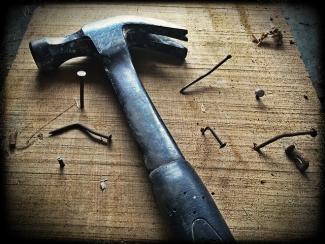
Famously Blunt Tools
The words “famously blunt tools” are not what you would expect to hear the Chairman of the Federal Reserve say in a widely anticipated FOMC meeting as he did on May 4th. Fed Chairman Powell said “that the central bank has a good chance to curb inflation without inducing a recession. We do not have precision tools. We have essentially interest rates, the balance sheet and forward guidance and they are famously blunt tools. No one thinks this will be easy or straightforward, but there is certainly a plausible path to this.” So, are the blunt tools enough to cool off the economy and bring down inflation without driving up unemployment and causing a recession here in the US? As a Naval Academy Graduate I like to use the comparison of slowing a naval warship, say an aircraft carrier, here to describe the difficulty in slowing, not stopping a fast growing economy. In 2021, the US economy grew at a brisk 5.6% and inflation surged from 1.4% to over 7.0%. The US economy has now regained more than 90% of the jobs lost in the early weeks of the pandemic and employers continue to hire at a fast pace (unemployment remains a low 3.6%). While some structural problems exist, the US economy is performing well considering that inflation is but one serious headwind with the ongoing battle against COVID and war in Europe providing great uncertainty in the background. Remember that recessions, by definition, involve job losses and higher unemployment in contrast to current labor conditions which have employers working hard to both make new hires and retain current workers. In fact, demand for some workers is so strong that jobs are going unfilled despite rising wages. So back to the aircraft carrier. As she steams mightily across the sea her commanding officer knows that to slow (or lose forward momentum) can cause great harm to the operational schedule. To stop the ship (when traveling fast, say at flank speed) could require a distance as large as 5 miles. Once stopped, it takes many miles for the ship to get back on course and schedule. The question we must then ask is can the US economy (under the “command” of the Fed) slow down enough to ease inflationary pressures without risking coming to a stop (or recession)?
The US economy may have already begun to slow even before the most recent FOMC meeting in which the committee voted to raise its benchmark interest rate by 50 bps or 0.50%. According to an Advance Estimate by the Bureau of Economic Analysis (BEA) released on April 28th, GDP decreased at an annual rate of 1.4% in the first quarter of 2022 after a strong result in the 4th quarter of 2021 in which GDP increased 6.9%. According to the recent BEA release “the decrease in GDP reflected decreases in private inventory investment, exports, federal government spending and state and local government spending.” The largest negative in the calculation was an historically large trade deficit which is the difference between imports ($351B) and exports ($241B) – the deficit shaved off 3 percentage points from this GDP estimate. The import data points again to an American consumer who continues to spend despite persistent inflation. Consumer spending, which accounts for about 65% of GDP, appears to be transitioning away a bit from goods (clothing, appliances, and furniture) and back to services (dining out, travel and entertainment). Credit card companies all reported strong spending rebounds in Q1 as Americans began booking domestic vacations and travel abroad. As we move further away from the pandemic, supply chain problems will lessen, and labor shortages should moderate suggesting that some of the imbalances that led to rapid inflation may very well begin to dissipate on their own without overly aggressive policy intervention. As household savings coming from COVID federal aid are drawn down (coupled with higher interest rates this summer), consumer demand should slow just as supply is starting to catch up.

